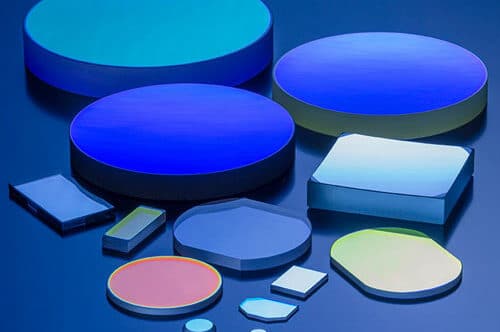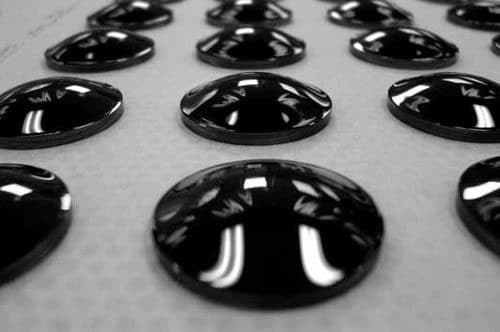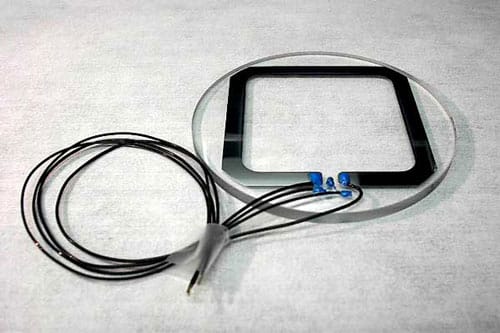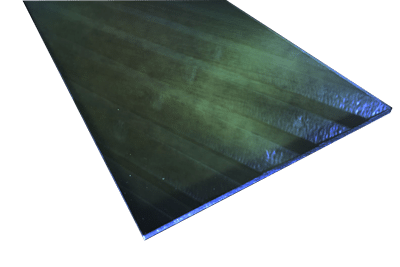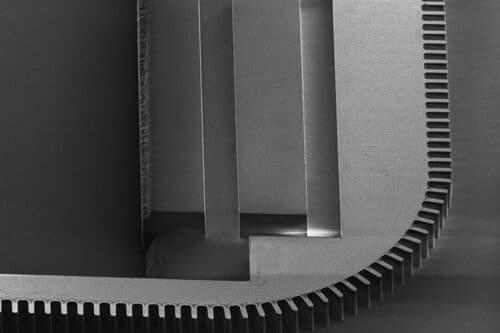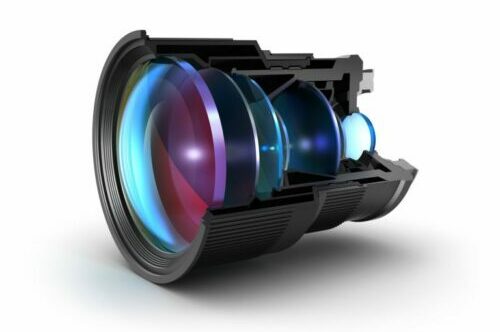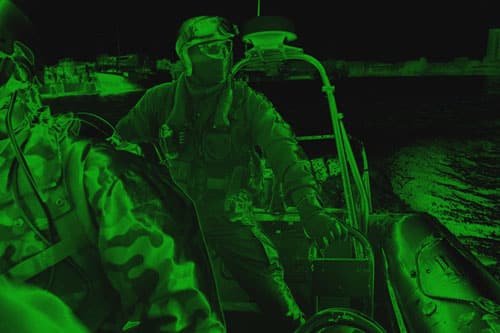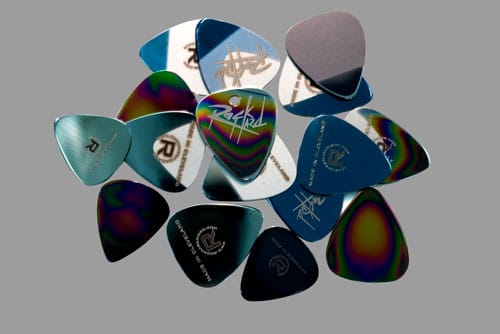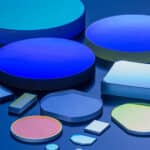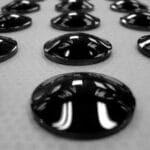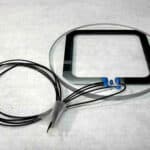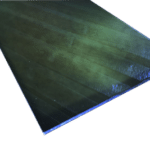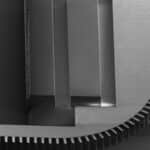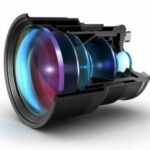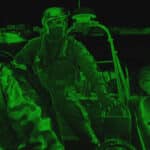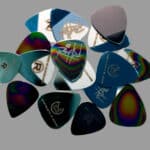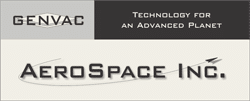
Anti-Reflective Coatings
GENVAC specializes in the design and production of anti-reflective (AR) coatings for optical components, windows and miscellaneous substrates for wavelengths ranging from ultra-violet to long-wavelength infrared (LWIR). Since 1994 the company has developed and manufactured proprietary critical deposition components systems and accessories which enable our coatings and products to operate in very adverse environments. The company’s core competency resides in our expertise in both ion-assisted electron beam evaporation and plasma enhanced chemical vapor deposition (PECVD). Oxide films deposited at reduced temperature (less than 200 C) using our proprietary reactive ion-assisted evaporation, achieve bulk density, with superior adhesion and wear-resistance, significantly more robust than similar films deposited at high temperature (greater than 400 C). Diamond-Like Carbon (DLC) deposited with PECVD on substrates such as Ge, Si, IG-6 and zinc selenide has optimum optical and wear performance for military-grade infrared windows. The company possesses all of the necessary analytical tools to optimize coatings on a wide variety of substrates tailored to customer specified applications.
Diamond Like Carbon
For almost two decades our company has produced and shipped products that meet all optical, wear resistant requirements and military specifications for optical systems installed on military aircraft including the F-14, F-16, F-18, F-22, F-35 and Apache Helicopter.
Since 2014 GENVAC has been developing DLC coatings for wear resistance and lubricity on a variety of metals for cutting tools, food processing, injection molding and a novel line of stainless steel guitar picks. Contact GENVAC for DLC solutions to metal wear issues.
Heated Windows
EMI RFI Windows
CVD Diamond
Display Coatings
Night Vision Infrared Windows
IR window surfaces are often directly exposed to adverse sea, land and air environments, such as salt water spray, blowing desert sand or ballistic airborne debris. GENVAC has the proprietary capability to coat this surface with a hard carbon coating known as diamond-like carbon (DLC). Our DLC is a perfect optical match to the infrared glasses used for infrared optical components and is regarded as the most lubricious low-friction optical coating in existence. Our DLC is capable of withstanding sea water erosion, surviving sandstorm-like impact, resisting chemical attack, and hard enough to withstand mechanical damage. An IR window equipped with GENVAC’s DLC on the outside and high efficiency anti-reflective coatings on the inside will have greater than 95% transmission at a specified wavelength.
GENVAC’s proprietary DLC multilayer coating has IR transmission equal to or greater than any competitive coating used in military and aerospace applications with superior adhesion. Since 2003 GENVAC has supplied custom infrared coatings for application wavelengths ranging from near-IR to beyond 30 um. These coatings have been qualified on infrared substrate materials including Ge, Si, ZnS, ZnSe, AMTIR, GA SIR, IG-5 and IG-6.
GENVAC welcomes the opportunity to develop highly specialized infrared coatings, including dual-band, multi-band and visible/infrared band coatings.
Custom Electronics Development for Physics Research
With extensive experience and a penchant for detail to further your basic R&D or product development program, GENVAC offers specialized design services ranging from basic vacuum system controls to complex customized electronics, isolated power supplies, high-voltage pulsers, especially addressing the challenges of “floating” measurements and weak signal detection.
From concept to production we can provide evaluation, design, and manufacturing ranging from single items to medium quantities and support the transition to quantity production according to the complexity and time-frame required.
Ranging from basic utility to complex and state-of the-art, here is a sampling:
- 6kV and 20kV “floating” Pulse Generators
- Low-Capacitance “floating” (30-pF, 20kV isolation) Power Supply Platform
- 10kV Cable Assembly for Teraphysics 94GHz TWT
- Basic Bake-Out Heater Controller (Low-Tech but User Serviceable!)
- Gate-Valve Controller (simple but Crucial High Vacuum System Protection)
- Quartz Crystal X-Ray Analysis Ratemeter (Specialized Industry)
- Red-Blue Optical Analyzer prototype for Fused Quartz Analysis
Rock Hard Picks
Applying physics to make the perfect guitar pick was a natural fit for Mearini, Founder and President of GENVAC Aerospace Inc. As an 18 year old, on the eve before driving to Berklee College of Music in Boston to pursue a degree in Guitar Performance, the young college freshman had a change of heart. A change that would eventually lead to a doctorate in Thin Film physics from Case Western Reserve University. While a formal degree in music was not in Mearini’s future, music continued to play an important role in his life. “I always keep a Gibson SG in my office,” Mearini joked “it makes testing the picks easy.”
When asked what advantage the DLC coating actually adds to the steel picks, Mearini explained “The surface of these picks creates the lowest coefficient of friction possible. It means it won’t wear and break your strings. Traditional metal picks without the coating require added caution when playing for fear of breaking a string mid-song. The wear that is typically experienced from a metal pick on metal strings will not occur. This pick delivers an aggressive predatory sound, and subtly generates new spectral harmonics. It sounds like you are hitting the strings with a diamond sword.”
“This project allowed me to combine my scientific expertise with my love for serious rock and create an amazing product here in the Rock Capital of the world.” Mearini noted.
“This pick adds one more innovation from Cleveland, since Cleveland invented laboratory diamond, diamond-like carbon, Rock-n-Roll AND the man of steel – Superman!”

